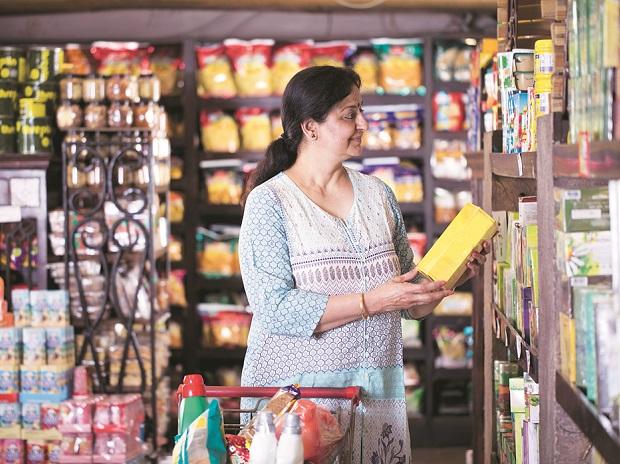[ad_1]
India’s fast-moving consumer goods (FMCG) sector grew at a slower pace, at 7.6 per cent, in October-December 2022 compared to the previous quarter as well as the year-ago period, as price growth tapered and volumes remained weak, according to data by market research firm NielsenIQ.
Volumes continued to decline in the December quarter but at a slower pace. In the quarter, volumes shrank 0.3 per cent year-on-year (YoY) compared to 0.7 per cent contraction in July-September. Price growth during the quarter was 7.9 per cent, lower than 9.9 per cent in the previous quarter.
FMCG companies were consistently increasing the prices of their goods in view of higher raw material costs. However, due to a decline in some raw material costs in recent months, companies have slowed down on price increases or taken price cuts in some cases.
NielsenIQ noted a drop in price growth both in the rural and urban markets. However, urban volumes still grew by 1.6 per cent YoY in the quarter, while rural volumes remained in the negative (-2.8 per cent). In value terms, urban markets witnessed an increase of 9.2 per cent, and rural witnessed 5.1 per cent growth. In 2022, the sector grew 8.4 per cent in value terms, while volumes shrunk by 1.5 per cent.
“Over the last one year, consumer spending was impacted primarily because of inflation, echoed by consumers in the shift to smaller packs, and by manufacturers via grammage reduction. Consumers in rural India have particularly felt this pressure the most, and rural markets see continuous negative consumption growth,” said Satish Pillai, managing director–India, NielsenIQ.
“However, it is encouraging to see positive notes in the organised sector, with modern trade growing (in) double digits in the last two quarters of the year, and absolute consumption levels continue to be higher than pre-Covid,” he added.
The food segment continued to witness volume growth, within which categories in staples and impulse remained positive. Non-food consumption continued to decline, and has witnessed lower volumes than pre-Covid levels in recent quarters.
NielsenIQ said in its release that in non-food, there was a lean assortment at retail outlets, and stock levels were also lower. Manufacturers are also reducing promos for categories like washing powder, detergent bars, toilet soaps, shampoo, etc.
Even small manufacturers of non-food items are feeling the pinch due to higher price growth, while small manufacturers of food continue to drive consumption growth.
“Consumers continue to feel inflationary pressure while manufacturers also continue to move away from promos to maintain the margins. Manufacturers should continue to support small packs in their portfolio as means to drive consumption, especially for bringing back relevance in case of non-food categories. Re-evaluation of the portfolio strategy becomes even more important to address the intensifying competition from smaller players as they make a comeback,” said Sonika Gupta, customer success lead (India), NielsenIQ.
Among regions, northern parts of the country witnessed volume growth, of 0.1 per cent, after five quarters, while the east remained stable with volumes at 0.6 per cent. Western and southern regions continued to witness contraction in consumption. However, there were marginal improvements against the same period last year.
In the west, consumption stood at – 0.9 per cent due to a slowdown in the urban areas and a continued decline in rural. In the south, it contracted 0.9 per cent.
“The slowdown in the south and the west is driven by the food bucket – consisting of staples, impulse & habit forming categories. For staples & impulse, the decline is seen due to high positive growths in the previous year, unlike other zones,” NielsenIQ said.
[ad_2]
Source link



